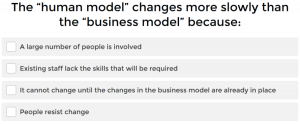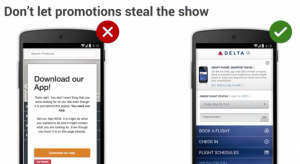Many articles are written on sales and marketing: how to generate leads, how to qualify prospects, how to improve sales, how to engage customers, how to turn leads into a gazillion dollars, how to do this, how to do that, and so on. I am fresh off two recent experiences as a potential customer that prompted me to write this piece. We – potential customers – are out there for you vendors to capture. We are often yours to lose. Despite all of your costly development, marketing and lead generation efforts, your first engagement has at best a 50/50 chance of fostering or squashing a potential business relationship. My two recent experiences are cases in point. I share them to illustrate how easy it can be to lose prospects despite the significant efforts expended to engage them in the first place.
I have been looking for some options to automate a cumbersome, form-laden approval process via e-mail. I want our employees to have the most frictionless, mobile-enabled experience as possible. For myself, I’d like to give my happy little thumb the option of leaning left and tapping “Approved” or leaning right and tapping “Not Approved”. The rest – data completion and e-mail distribution – can be automated very easily. The world would be a much happier place then.
I recently identified a vendor that seemed to have the goods: a tool for mapping processes coupled with the ability to integrate a seamless UI into e-mail. Nirvana! I was excited and wasted no time sending an inquiry via the vendor’s website. The next day I received a nice e-mail from the regional sales rep – let’s call her Debbie – offering to set up a call so she could gather more information about my needs. Being the eager bunny that I am, I thought I’d do one better and replied to Debbie with a detailed e-mail outlining the process and explaining what I needed. Debbie followed up with a GoToMeeting invitation. I was impressed! I expected to learn more about the product and possibly see a demo.
The time for the meeting came and I gingerly clicked on the GoToMeeting link. And waited. And waited. After a few minutes, Debbie finally joined the meeting. When she told me we would just be talking and there was no need for her to share her screen, I was disappointed. When she said the call was for information gathering, I was disappointed even further. When I reminded her that I sent her an e-mail in advance of the call with all of the information she was requesting, I could hear her tapping on the keyboard and soft mumbling as she read the e-mail. She then said she had everything she needed, but just needed one more piece of information: what was my function in the company. I told her my contact information and title were in the e-mail, and my profile was on the company’s website.
At this point, I politely told Debbie that I felt she was not prepared for our call and that, based on this, I did not believe her company would be a good fit for us as a vendor. She was silent for a moment, and then simply said she understood. My sense was that she took my comments to heart.
My second recent experience involves an unsolicited inbound e-mail sales pitch from an outsourced software development firm. While I tend to ignore unsolicited pitches, the e-mail was thoughtful enough that I decided to visit the company’s website and learn more. I learned about their offerings, specialties, and general information about the company. At this point, I wanted to learn more so I decided to review their case studies. I clicked on the first one and – BAM! – a big pop-up window asked me for lots of details, not just my name and e-mail address. Really? You want customers to go through the time-consuming and annoying process of providing detailed contact and company information just to review a case study? My guess is that contracting with you will not be easy if you make me do this just to learn more about you. I closed my browser. I also sent a polite note to the salesperson sharing my experience and suggesting he share the feedback with his marketing team. No harm in providing constructive feedback.
Both of these cases – one in which I proactively contacted a vendor and the other in which I responded to an unsolicited sales pitch – illustrate just how simple it can be to lose a prospect. The simplicity of keeping me in the pipeline and qualifying the opportunity is just as simple:
- Take a moment to qualify your prospect. At a minimum, confirm whether their role and title suggest they have purchasing authority or influence.
- Make sure you have a handle on all interactions with the prospect, whether the data is in a CRM system or your Inbox. Work with what you have.
- Consider the learning path a prospect is likely to navigate before taking the next step of asking for a demo or a quote. Think long and hard about what you ask prospects to do to gain access to information that will likely increase their appetite to engage with you.
Happy selling!
Note: The views expressed herein are my own and do not necessarily represent the views of any company with which I am associated.
Xconomy
(45)






